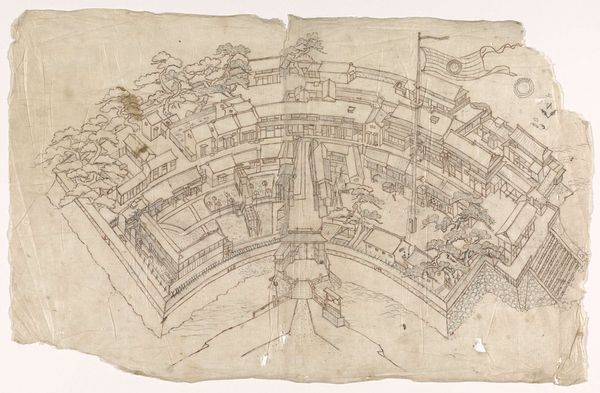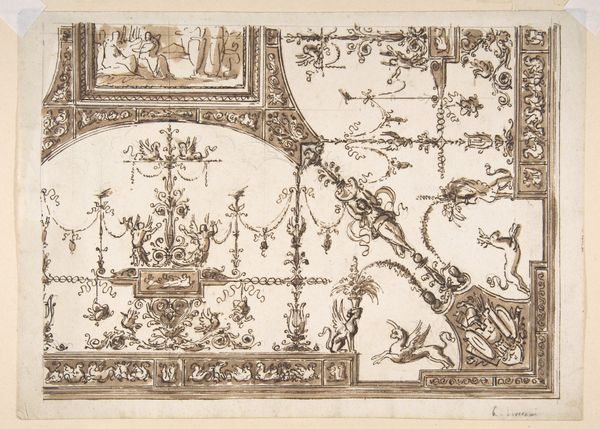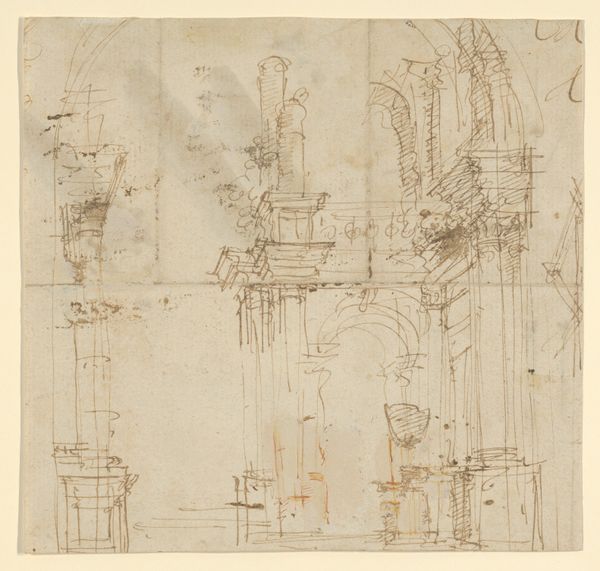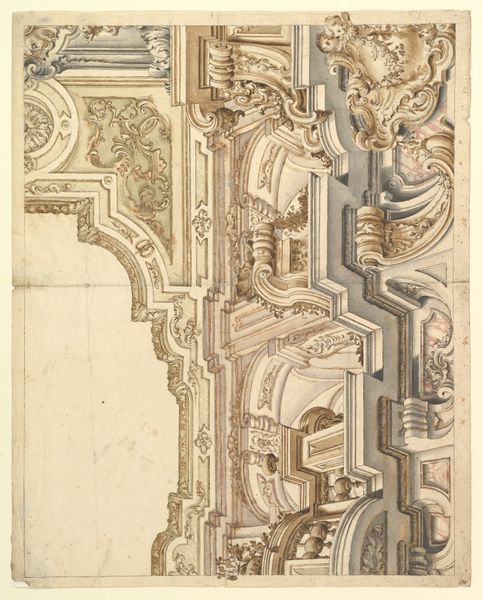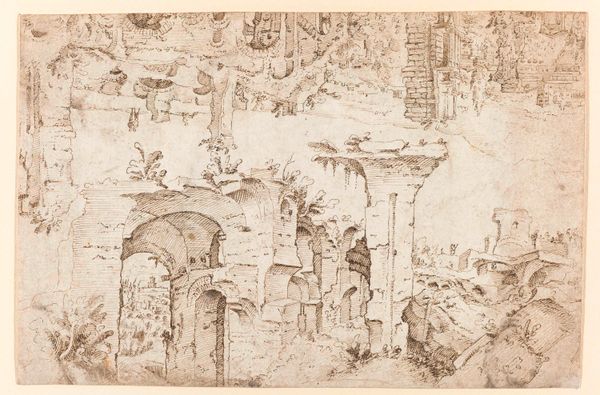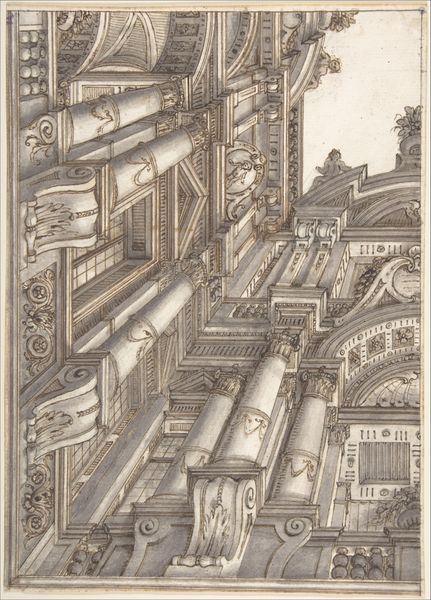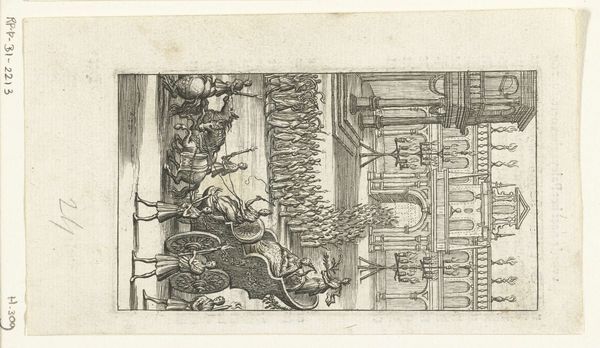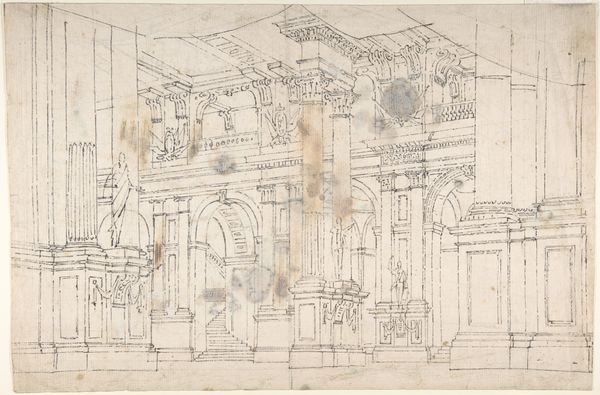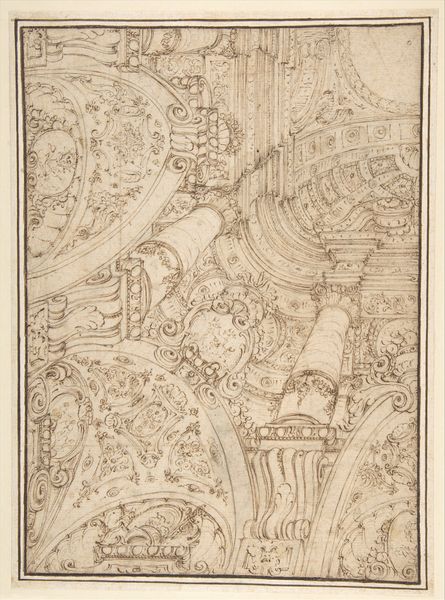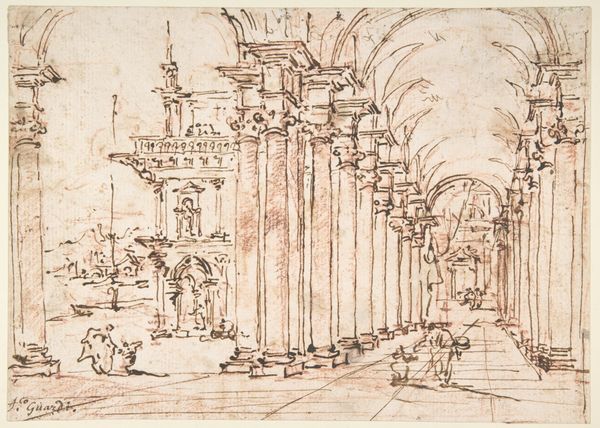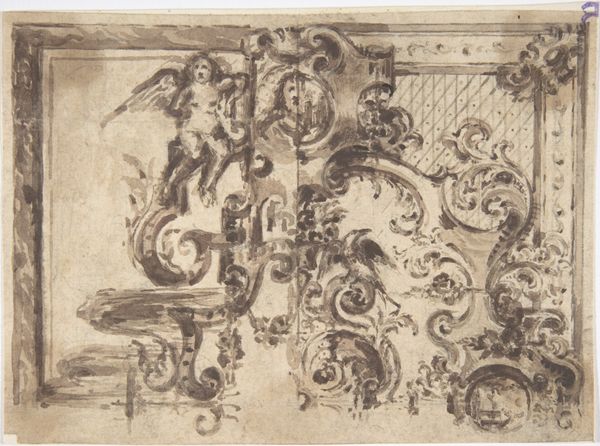
Design for a Painted Ceiling: Perspective Architectural with a Figure at the Center 1700 - 1780
0:00
0:00
drawing, architecture
#
drawing
#
baroque
#
figuration
#
history-painting
#
architecture
Dimensions: sheet: 8 1/8 x 9 in. (20.7 x 22.9 cm)
Copyright: Public Domain
Editor: So, here we have a drawing, a design for a painted ceiling from somewhere around the 18th century. It's anonymous, currently held at the Met. It looks so intricate; all the architectural flourishes and figures kind of blend together. What are your initial thoughts looking at it? Curator: Well, first off, let’s consider the labor involved. An elaborate ceiling like this wouldn’t be the work of a single artist. We are looking at many different skilled artisans—the draftsmen, the plasterers, the painters... The whole social apparatus of artistic production is embedded within this single drawing. Editor: Right, a whole team! How would they decide who does what? Was it highly stratified? Curator: Absolutely! Think about the guild system. Skill determined not only your role but your compensation and social standing. Someone sketching the design had a different level of access and control than the guy mixing the paints. The finished product obscures that hierarchy of labor. What’s also fascinating to me is the use of paper, ink, and chalk: seemingly disposable materials that were essential in dictating such a grandiose output. Editor: So you’re saying it’s important to think about not just the final spectacle, but the materials and conditions that made it possible? Curator: Precisely! And how this connects to contemporary discussions of class, patronage, and the consumption of art in society. We celebrate the aesthetic result but rarely consider the broader economic ecosystem that produced it. It reveals so much about the structures that underlay baroque splendor. Editor: That really flips my perspective on it. I was initially just caught up in the visual complexity, but seeing it as a record of labor relationships adds a whole new layer. Thanks! Curator: My pleasure. Looking at art in terms of materials, tools and their use adds so much to our understanding of a work, doesn't it?
Comments
No comments
Be the first to comment and join the conversation on the ultimate creative platform.

